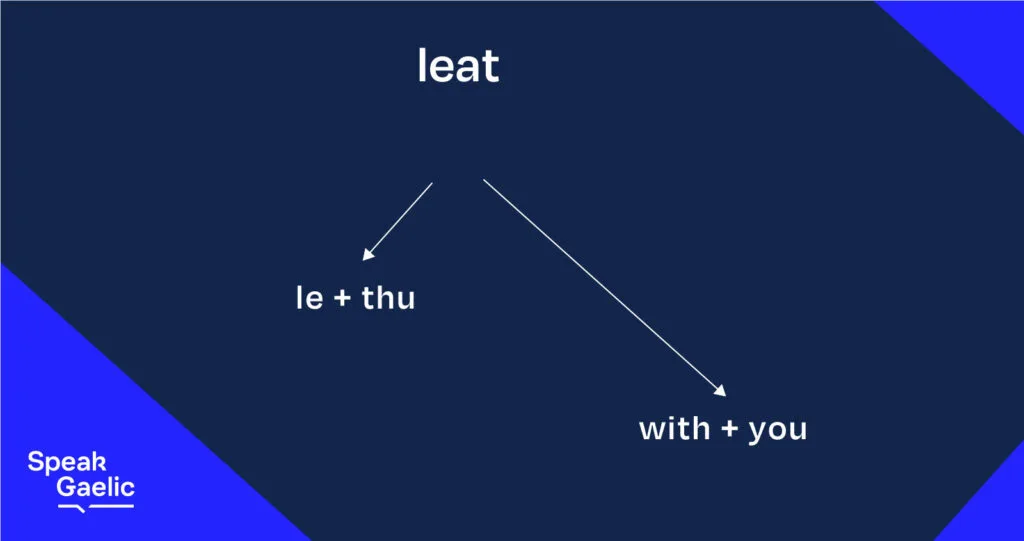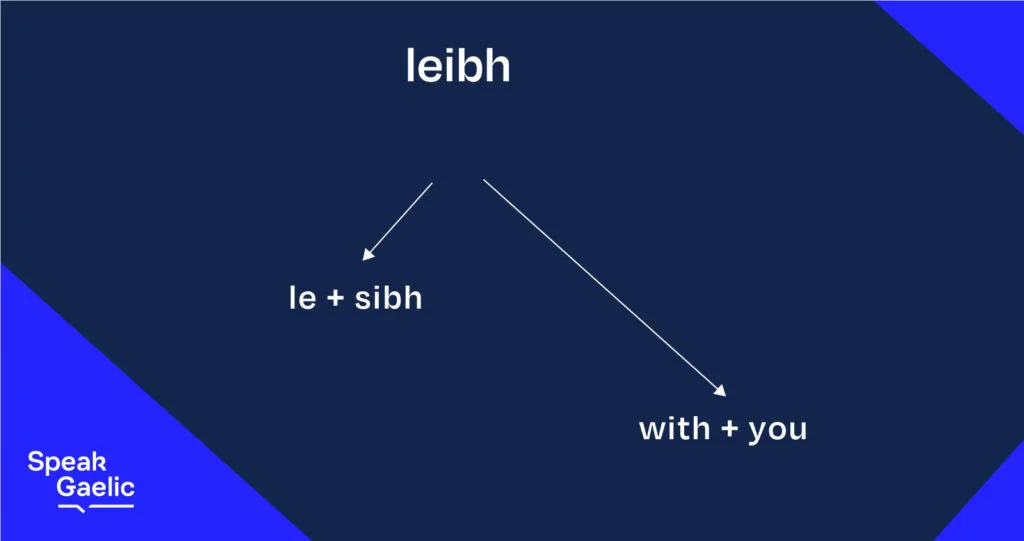leat & leibh
Gaelic, like many other languages, has a formal version of 'you' and an informal version of ‘you’. This difference in pronouns applies also to prepositional pronouns, such as with le (with). Use leibh to speak to:
- a group of people
- a stranger
- someone older or more senior to you
tapadh leibh
thank you
However, if you are speaking to a child or a friend, use leat.
tapadh leat
thank you
What happens if you want to use le with another pronoun? We need to learn the correct prepositional pronouns.
We often use the preposition ‘le’ with a pronoun (e.g. I, you, it), to give us phrases such as “with me” and “with you”. We just need to learn these words to give us these new sentences. We already know the structure.


tapadh leat
thank you
tapadh leibh
thank you
Let’s learn the other prepositional pronouns.
| le + mi | leam | with me |
| le + thu | leat | with you |
| le + e | leis | with him / it |
| le + i | leatha | with her / it |
| le + sinn | leinn | with us |
| le + sibh | leibh | with you |
| le + iad | leotha | with them |
leam
with me
leat
with you
leis
with him
leatha
with her
leinn
with us
leibh
with you
leotha
with them